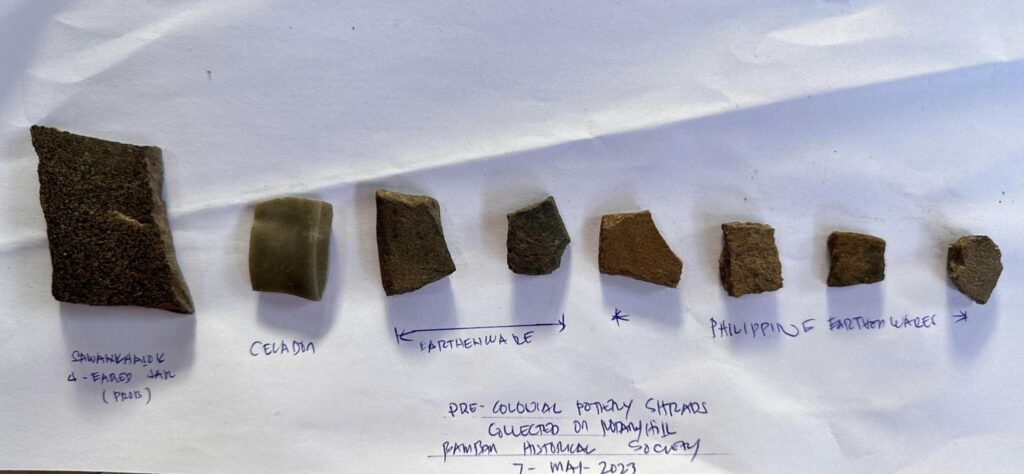
125th ANNIVERSARY OF THE PHILIPPINE-AMERICAN WAR
B-DAY: BAMBAN DAY JUNE 5-6, 1899
INVESTIGATING HISTORY: THE BAMBAN RAILROAD STATION 1899-1902
In early 2000, I received an email from America, of then old lady who was a direct descendant of American soldier who fought during the Philippine-American War and stationed at Bamban. The American soldier was Joseph Bryant Bedinger, from Troop B, 11th U.S. Cavalry stationed in the town in 1901-1902. The granddaughter was Dorothea Clymber, who inherited the sets of original photographs taken by his grandpa while stationed in Bamban, consisting of more than 35 images. The photographs were all donated to Bamban Historical Society and are now in the collection of the Bamban WWII Museum.
One of the photographs is the Bamban Train Station, taken in April 1902, with the locals in front of the facade of the station. The men were probably some prominent people of Bamban. Attached is the scanned image of the Bamban Station.
The same train station that was used by the Filipino Army of Liberation during the height of the Philippine-American War, especially in the period of June to November 11, 1899, when the town became one of the bastions of resistance against the American advance from Pampanga, as part of the Paruao River Line, where the Bamban Trenches of fortified lines and positions around the high ground of the present Mansion Ridge near the Bamban Museum and the foothills of the Rotary and Bantiti.
On June 5, 1899, General Aguinaldo trekked to Bamban from Cabanatuan, via the backroad of the Magao and Bamban-Concepcion, where he established his capital and field headquarters, arriving most probably in the afternoon. The nearest Spanish-era house to the train station that can accommodate the headquarters, in my opinion, is the Feliciano Mansion House, or the “Big House”, located behind the public market in San Nicolas.
On his journey to Angeles to meet General Venancio Concepcion who was headquartered at the Pamintuan Mansion in Angeles (Pampanga), General Aguinaldo used the train transportation and may have embarked from the same station. On the following day, June 6, most of the Filipino generals in the field, particularly in Central Luzon and Dagupan were summoned to report at the Pamintuan Mansion HQ.
One of those generals was the Kapampangan from Arayat; General Jose Alejandrino. On his way to Angeles via train transport, and with a little stop-over at the Bamban Station, General Alejandrino was apprehended by Colonel Urbano Lacuna, whom he mistook as General Luna. The scene between General Alejandrino and Colonel Lacuna at the Bamban Station became part of the beginning of the movie “Goyo: Ang Batang Heneral”.

The Bamban Train Station had seen moments of History from the Philippine-Revolution, Second Phase (or the Philippine-American War), the American Occupation and WWII. With the decline of train transport in the 1980s, the Bamban Station was neglected and succumbed to deterioration, human activity and intervention, until the eruption of Mt. Pinatubo in 1991. At present, only the thick walls of the original station remain, such ruins who were witness to history.
Our Field Recon Team had visited the ruins of the Bamban Station, where some families used the former facility as temporary housing. A typical Bambanense born in the 1970s like me, have fond memories of the several visit to that train station. We were accompanied by friends, History enthusiasts and American researchers and historians in that field survey of the station.
On this important occasion of B-DAY (or Bamban Day), I am posting these photographs of the Bamban Train Station and would like to share important part of our Nation’s History on the fight for our freedom 125 years ago.
Rhonie Dela Cruz
Photographs:
(1) Captured scene from the movie “Goyo: Ang Batang Heneral”, showing the facade of the Bamban Station on June 6, 1899. From TBA Studios.
(2) Bamban Train Station circa 1902. Original photograph by Joseph Bryant Bedinger (Troop C, 11th U.S. Cavalry), donated by Dorothea Clymer, Bamban Historical Society Collection.
(3-4) Photographs taken at the ruins of the Bamban Station; Rhonie Dela Cruz Collection.


